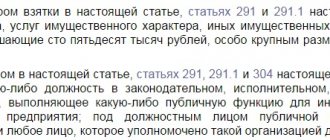ST 110 of the Criminal Code of the Russian Federation.
1. Driving a person to suicide or attempted suicide by means of threats, cruel treatment or systematic humiliation of the victim’s human dignity -
shall be punishable by forced labor for a term of up to five years with deprivation of the right to hold certain positions or engage in certain activities for a term of up to seven years or without it, or by imprisonment for a term of two to six years with deprivation of the right to hold certain positions or engage in certain activities for a term of up to seven years or without it.
2. The same act committed:
a) in relation to a minor or a person who is known to the perpetrator to be in a helpless state or in financial or other dependence on the perpetrator;
b) in relation to a woman who is known to the perpetrator to be pregnant;
c) in relation to two or more persons;
d) by a group of persons by prior conspiracy or an organized group;
e) in a public speech, a publicly displayed work, the media or information and telecommunication networks (including the Internet), -
shall be punishable by imprisonment for a term of eight to fifteen years with deprivation of the right to hold certain positions or engage in certain activities for a term of up to ten years or without it and with restriction of freedom for a term of up to two years or without it.
Article 110 of the Criminal Code of the Russian Federation - liability for incitement to suicide
This is the main article under which a person can be prosecuted for facilitating another person’s decision to commit suicide.
It should be noted that the qualification of the actions of the guilty person almost always raises great doubts. For example, when a guy leaves a girl after several years of dating, and the girl ends up throwing herself out of a window. Or a father beats a teenager with a belt who is skipping classes; in despair, the boy throws himself under a train. Will the actions of the guy and the man be criminally punishable? Each specific situation must be analyzed individually. The same circumstances can be both a criminal act and an ordinary everyday conflict that does not fall under the criteria of a crime.
Article 110 of the Criminal Code of the Russian Federation provides for liability for the following actions of a person that lead to the suicide of another person:
1. threats, that is, statements about the occurrence of any negative consequences for the victim in the future. This may be a threat to disseminate certain information that the victim would like to keep secret; dismissal from work, use of violence, etc. Threats can be either direct (in a personal meeting) or written, in the form of messages, through correspondence via email, on social networks, etc.
Example No. 1 . The woman was engaged in prostitution in St. Petersburg for a long time, but over time she managed to get out of the vicious circle of criminal connections, moved to Belgorod, got married and gave birth to a child. Imagine her surprise when, in one of the city parks, she accidentally met a former regular client, who from that day on did not stop reminding her of himself, was waiting at the door of the apartment, expressing intentions to tell her husband the details of their intimate meetings. Unable to withstand the psychological attack, the woman committed suicide. As the investigation established, she also received SMS threats, which reported the date and time when the attacker intended to tell her husband about her unpleasant past. The man was convicted under Art. 110 of the Criminal Code of the Russian Federation.
2. cruel treatment - judicial practice understands this as physical violence, torture, beating, as well as psychological violence - ridicule, bullying, etc.
Example No. 2 . An excellent student girl was beaten up by her classmates right on the street, they shaved her head and filmed it all, and posted the video on YouTube. After some time, the schoolgirl took a many times increased dose of sleeping pills, after which she fell into a coma and died. In this case, she was subjected to cruel treatment in the form of physical violence (beating) and psychological influence (bullying, distribution of the video on the Internet, etc.).
3. systematic humiliation. Article 21 of the Constitution of the Russian Federation states that the dignity of the individual is protected by the state, and its derogation is a violation of one of the fundamental constitutional rights. Insult, ridicule - all this falls under humiliation. The sign “systematic” means that such actions are performed repeatedly, constantly.
Example No. 3 . Nasonov E.N. He did not hide his infatuation with the woman living in the next entrance to his wife. Nasonov did not work, which did not stop him from taking the entire salary from his wife and spending it on expensive gifts for his mistress, doing this demonstratively. Nasonov E.N. told the details of his intimate life to his wife, who, unable to bear everything that was happening, committed suicide. The court concluded that by his behavior Nasonov E.N. systematically humiliated the dignity of the victim, found him guilty of committing a crime under Art. 110 of the Criminal Code of the Russian Federation.
In practice, there are often situations where all three signs (threats, cruel treatment or humiliation) are present simultaneously.
Sometimes incitement to suicide is associated with other crimes.
Example No. 4 . After a fun party, several drunken men locked a woman in one of the rooms of the dacha where the celebration was organized. For 3 days she was kept in a locked room, occasionally fed and periodically beaten. On the 4th day the woman hanged herself. In this case, the perpetrators were sentenced to a long term for the crime of incitement to suicide with all the signs simultaneously: humiliation, cruel treatment, threats, as well as for unlawful imprisonment (Article 127 of the Criminal Code of the Russian Federation) and beating by a group of persons (Article 111 of the Criminal Code of the Russian Federation ).
In some situations, articles of criminal law already cover incitement to suicide. Thus, in the articles “exceeding official powers” (Part 3 of Article 286 of the Criminal Code of the Russian Federation) and “rape” (Part 3 of Article 131 of the Criminal Code of the Russian Federation) there is already a sign “causing other grave consequences”. For example, if a prison officer periodically beats a convict who ultimately decides to commit suicide, the official’s actions will only include Part 3 of Art. 286 of the Criminal Code of the Russian Federation, since it covers grave consequences, which in this case means suicide.
Responsibility under Art. 110 of the Criminal Code of the Russian Federation also occurs in the case when the victim attempted to die, but the doctors managed to save him. In such situations, a number of qualification questions also arise: how to understand that a person really intended to commit suicide, and did not just pretend, knowing that he would be stopped or saved? It all depends on the specific circumstances that indicate the reality of the actions of both the perpetrator and the victim.
Question: How to prove incitement to suicide?
Evidence can be any information indicating an impact on a person, inducing him to make the wrong decision to die: letters, audio recordings of calls, video surveillance data, testimony of witnesses and sometimes the story of the victim himself, who remained alive.
Let us add that incitement to suicide attempt is extremely rare in judicial practice - those who survived are in no hurry to file an application with law enforcement agencies. Responsibility under Art. 110 of the Criminal Code of the Russian Federation begins at the age of 16; the investigation of cases in this category is carried out by the investigative committee.
Set of acts
It occurs if a person is driven to suicide by an official. In addition to Art. 110, Part 3 (clause “c”) of Art. 286, establishing liability for exceeding one’s powers with grave consequences. The combination also occurs if incitement to suicide or attempted suicide was committed using actions that constitute an independent criminal act (torture, extortion, etc.).
Punishment
The punishment for driving a person to suicide depends on the qualifying criteria.
Part 1 art. 110 of the Criminal Code of the Russian Federation is a simple form of crime, without additional signs - that is, when the victim is forced to commit suicide through threats, cruel treatment or humiliation. Punishment under this part of the article can be in the form of imprisonment from 2 to 6 years . As an additional punishment, deprivation of the right to hold certain positions for a period of up to 7 years can be imposed - usually applied to officials who are found guilty of a crime.
Part 2 Art. 110 of the Criminal Code of the Russian Federation provides for a more severe punishment, which can be imposed in the form of imprisonment for a term of 7 to 12 with mandatory restriction of freedom for up to 2 years . This means that after the convicted person has served his term of imprisonment, he is obliged to register with the penal inspection and comply with the restrictions imposed by the court for 2 years (not to travel outside the city, stay at home at night, etc.). d.). As an additional punishment, a ban on holding certain positions for a period of up to 10 years may be imposed. Part two of Article 110 of the Criminal Code of the Russian Federation provides for the following qualifying criteria (there may be only one of them or several at once):
- crime against a minor . As in other articles of the Criminal Code, an act against a child is always punished more severely than the same actions against an adult. For the perpetrator to be held accountable, there must be evidence demonstrating knowledge of the real age of the minor.
- in relation to a person who is in a helpless state due to his health, position, financial or other dependence on the perpetrator, etc. For example, an elderly person who cannot stand up for himself and provide strong resistance to the offender. It is important to understand that if a person is helpless due to his mental illness, does not understand and does not fully realize that he is committing suicide, then the criminal who pushes him to death is actually committing murder.
- in relation to a woman who is pregnant - for liability for a crime that includes this feature, evidence of knowledge of pregnancy is required. This may be indicated by external signs of the victim or close relationships of the perpetrator (for example, when a cohabitant or husband is brought to justice).
- in relation to two or more persons . Driving several people to suicide is extremely rare in practice. At the same time, if the intent of the perpetrator was aimed at driving two or more people to suicide, this qualifying characteristic will be incriminated against him.
- the crime was committed by a group of persons or an organized group . The difference between a “group” and an “organized group” is that an organized group is more stable, usually has more than 3-5 participants, roles and functions are clearly distributed, and there is a leader.
- when threats or humiliation aimed at achieving the result of leading to suicide are demonstrated publicly (in the presence of other persons), including through radio, television, the Internet (for example, a YouTube channel).
If all the actions contained in the article are completed, but the victim at the last minute changes his decision to take his own life, the actions of the perpetrator will be an attempt to incite suicide.
Until June 2022, the punishment provided for in Article 110 of the Criminal Code of the Russian Federation was comparatively milder. Thus, for “simple” incitement to suicide, judges could impose a maximum of 3 years in prison (currently 6 years). There was only one part (the first) in the construction of the crime, and all qualifying features and the second part as a whole were absent; it was introduced by federal law dated 06/07/2017. In addition, the same law introduced two additional articles into the Criminal Code of the Russian Federation in 2022, providing for liability for incitement to suicide. Let's take a closer look at them.
Article 110.1 of the Criminal Code of the Russian Federation – inducement to suicide or assistance
Question: What is the difference between inclination to suicide and driving it to it?
The method of committing the crime. Responsibility for inducement occurs regardless of whether the victim took measures to end his life or not. If in Art. 110 of the Criminal Code of the Russian Federation, the method is violence, threats, humiliation and cruel treatment, then by inducement the legislator understands:
- persuasion - oral, written persuasion, can be through social networks or other persons;
- proposals - the guilty person offers the victim to climb onto the roof of the house, jump off, etc.
- bribery - convinces one to die in exchange for some benefit - for example, money for the relatives of the victim;
- deception - misrepresentation, distortion of events. For example, when incorrect information is conveyed to a person, a mother is deliberately told that her child has died when he is alive, as a result of which the woman poisons herself.
This list, contained in part 1 of Art. 110.1 of the Criminal Code of the Russian Federation is open; the law allows prosecution under this norm and with other forms of inclination. For example, in the form of a game or quest, the Internet community knows the so-called “death groups” called “Blue Whale”, “Fairy of Fire”, operating on social networks. The creation of these Internet groups was aimed at the youth environment, in which cases of suicide have increased many times over.
In the second part of Art. 110.1 of the Criminal Code of the Russian Federation provides for liability for facilitating suicide by:
- advice _ For example, when the culprit recommends how best to cut veins - lengthwise or crosswise, or from which floor it is “better” to jump down.
- instructions . One of the death groups, whose victims were several children who committed suicide, sent messages every day at the same time with instructions on where to go and how to commit suicide.
- providing information . For example, when the victim is informed about what sensations await him in the “flight” from the upper floors of a high-rise building, what will happen in the afterlife, etc.
- providing an instrument for committing suicide - for example, a firearm or medical poison, with the promise to hide traces of suicide and objects.
Within the meaning of Part 2 of Art. 110.1 of the Criminal Code of the Russian Federation, by the time assistance is given to the victims, the decision to die has already been made, and the guilty person, instead of reporting this to the relevant authorities or dissuading him, helps the suicide. Moreover, such “help” becomes criminally punishable regardless of the consequences - it does not matter whether the victim died or not. List of ways of assistance in part 2 of Art. 110.1 of the Criminal Code of the Russian Federation is exhaustive.
The punishment provided for in the Criminal Code of the Russian Federation for incitement or assistance to suicide can be imposed in the form of imprisonment for up to 2 and up to 3 years, respectively - it turns out that the term is significantly less than for incitement to suicide. At the same time, other parts of Article 110.1 of the Criminal Code of the Russian Federation provide for more severe punishment for inducing or facilitating suicide, as a result of which a person voluntarily died. Depending on the qualifying criteria, the punishment can reach 15 years in prison.
Delineation from Art. 105
Some lawyers believe that if there is direct intent, incitement to suicide should be considered murder. This opinion is erroneous. The authors of this position do not take into account the fact that the objective parts of Articles 105 and 110 of the Criminal Code are different. In the case of suicide, unlike murder, the perpetrator does not commit actions that directly cause death. The victim independently makes the decision to end his life and carries it out himself. He is guided by his own will and consciousness. Possibly careless incitement to suicide. However, according to Art. 24, Part 2 of the Code in this case, liability is excluded.
Article 110.2 of the Criminal Code of the Russian Federation – activities aimed at inducing suicide
This is the second new article introduced by federal law dated 06/07/2017. There is little judicial practice on this norm; it was introduced, like Art. 110.1 of the Criminal Code of the Russian Federation, in connection with mass suicides of teenagers, news about which surfaced in 2016-1017 in different cities.
The article provides for liability for the mass dissemination of information about methods of suicide, as well as for the dissemination of calls to commit suicide. Distribution can be in newspapers, magazines, leaflets, on the Internet, etc.
The punishment provided for such illegal activities can reach 15 years in prison . At the same time, the legislator allows to exempt from liability those persons who voluntarily, before the initiation of a criminal case, stopped disseminating calls and information, and actively cooperated with the investigation in solving crimes.









